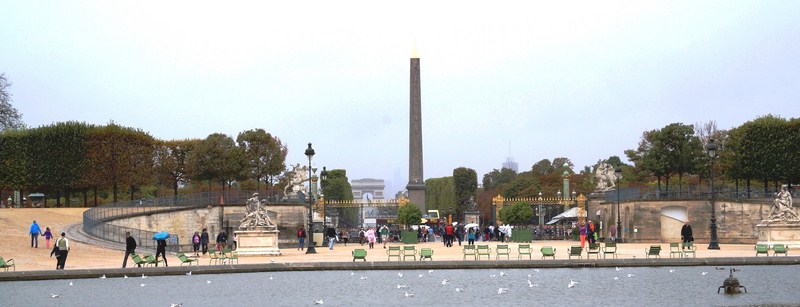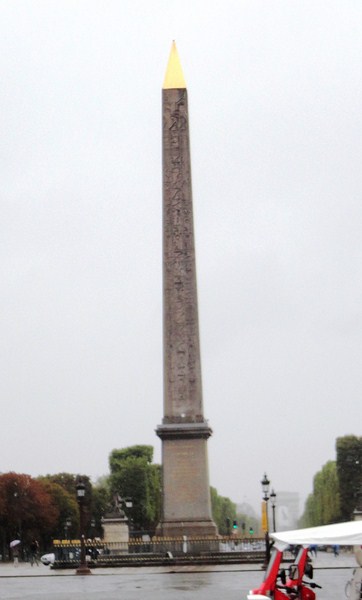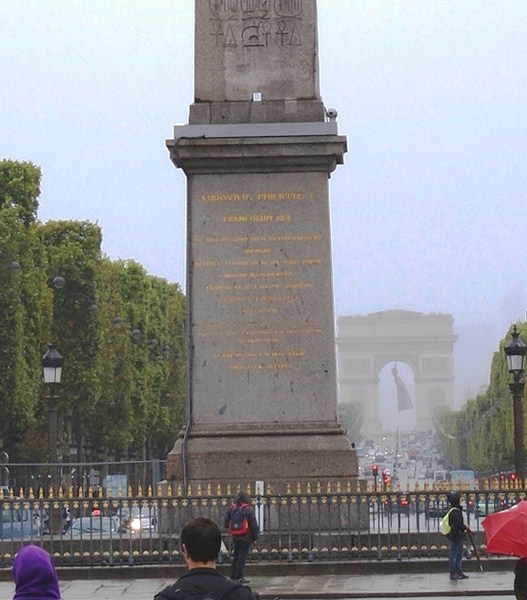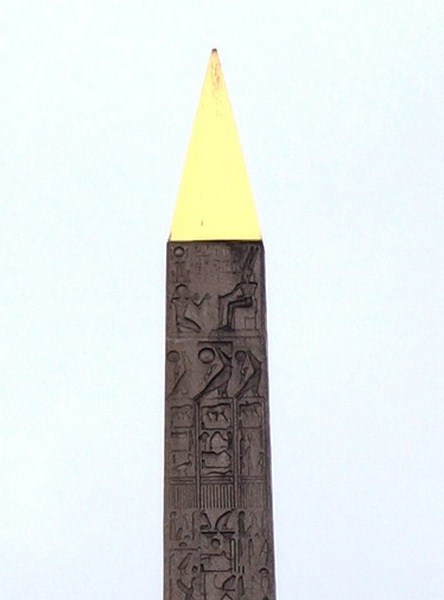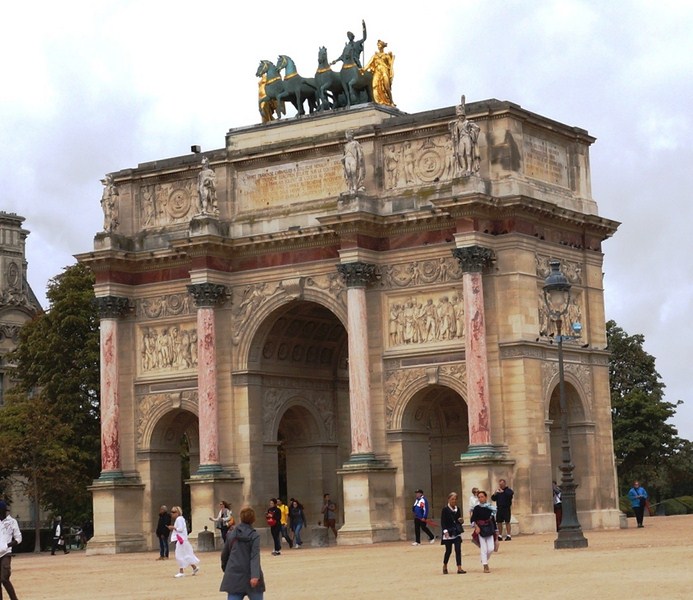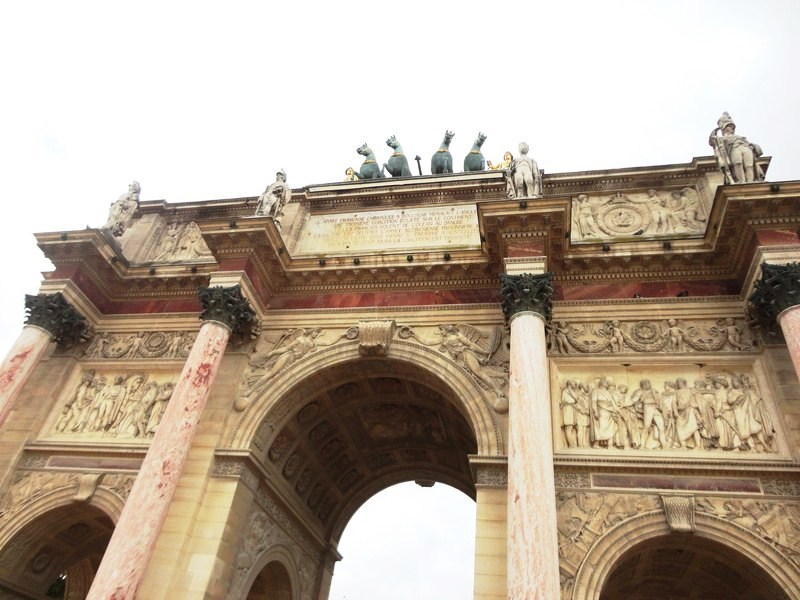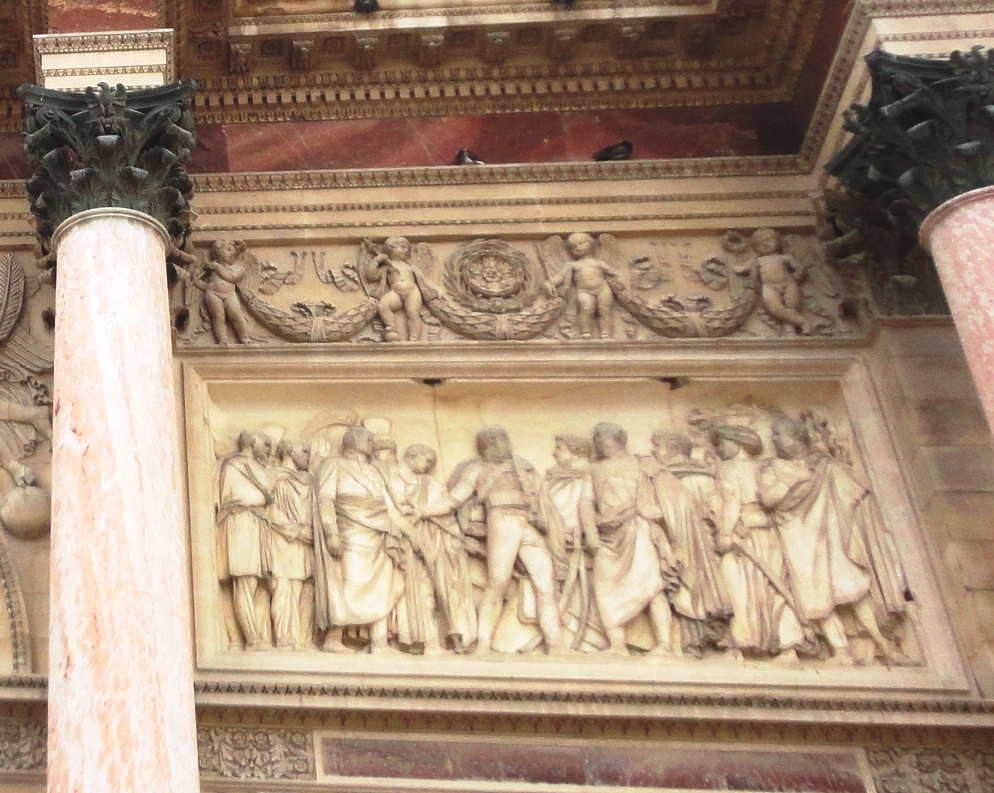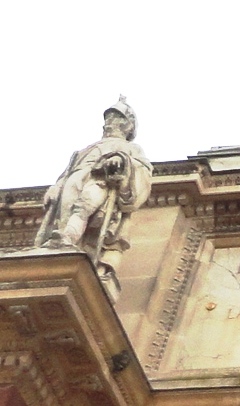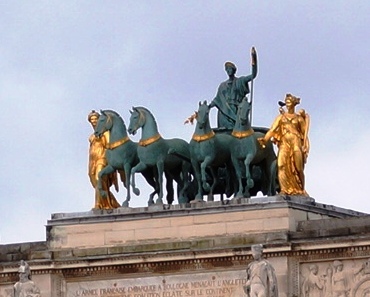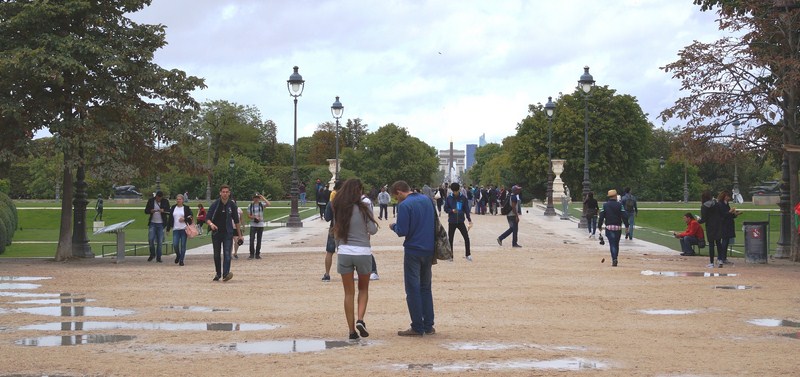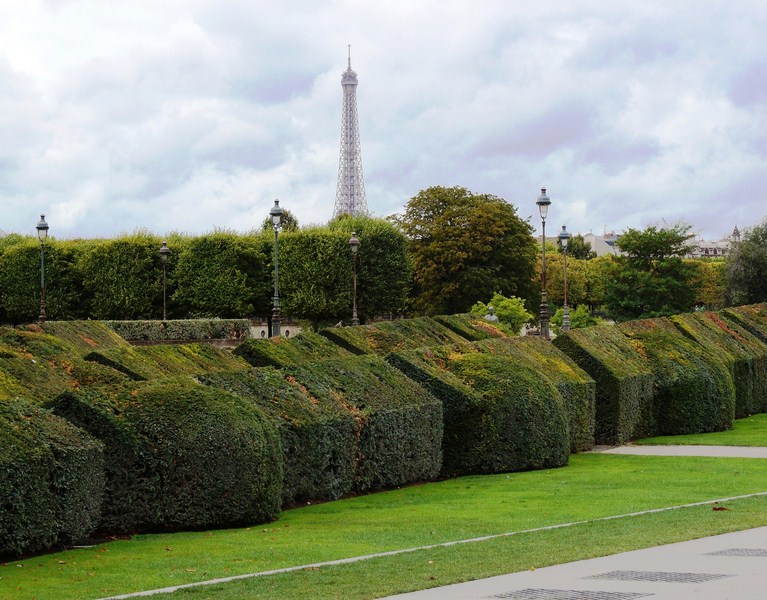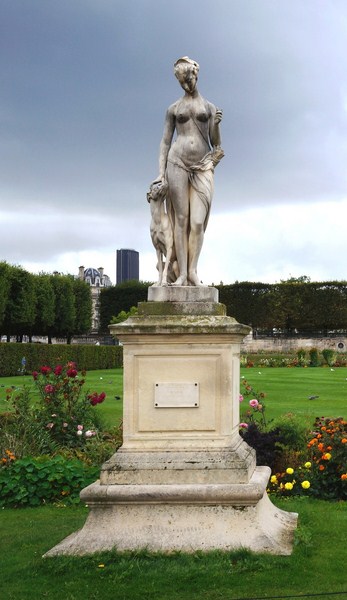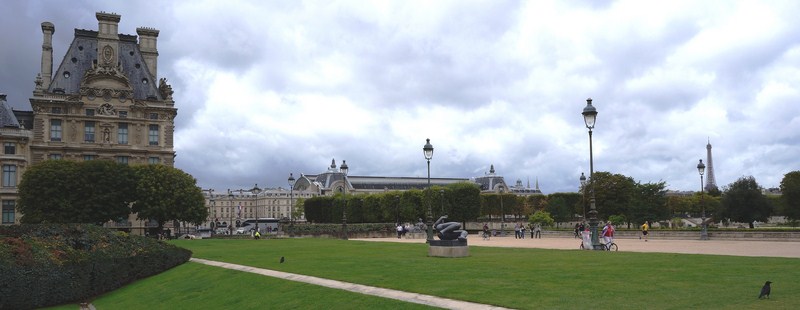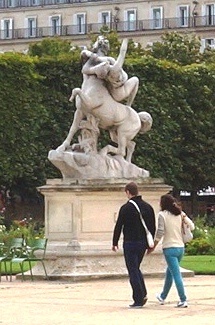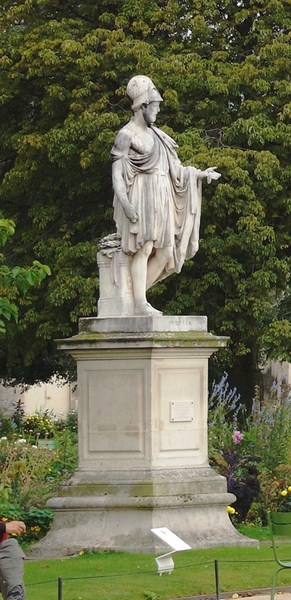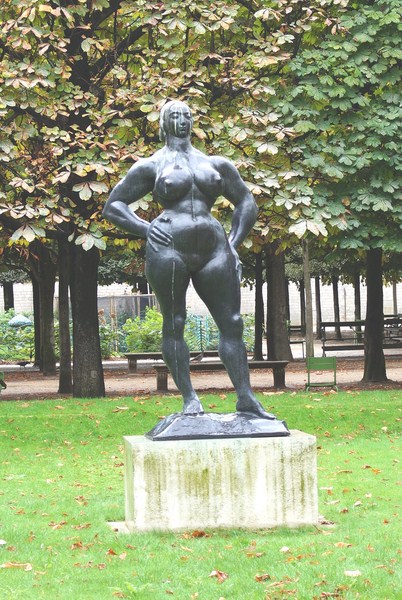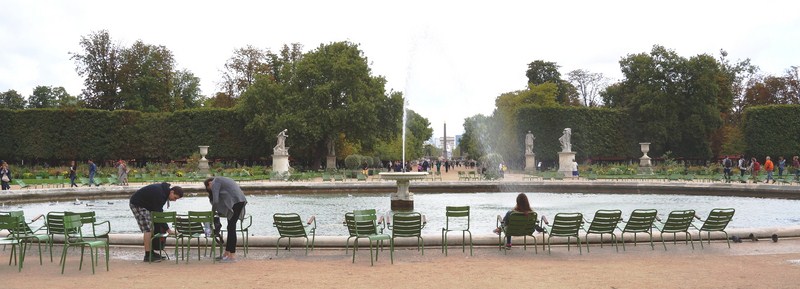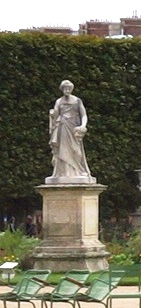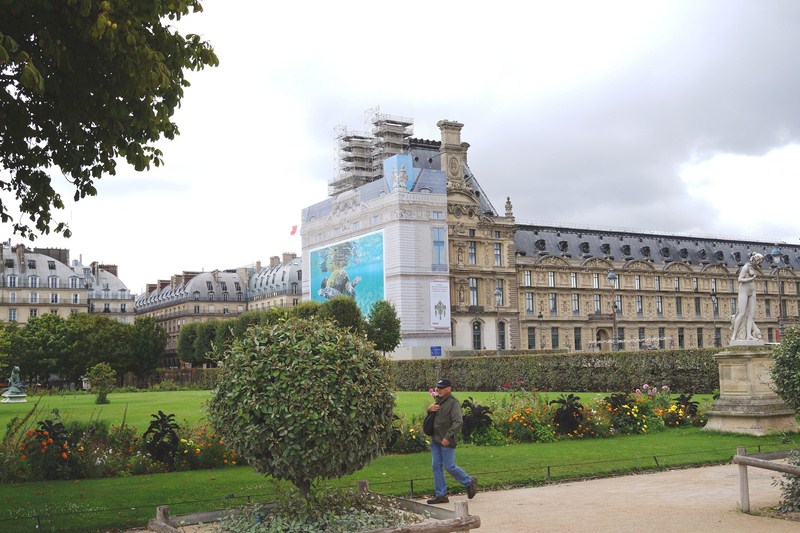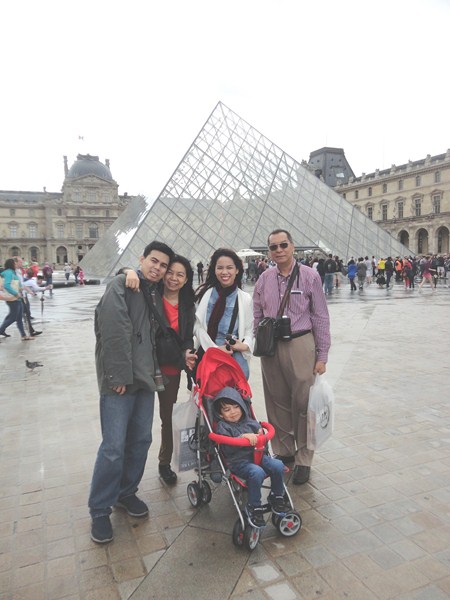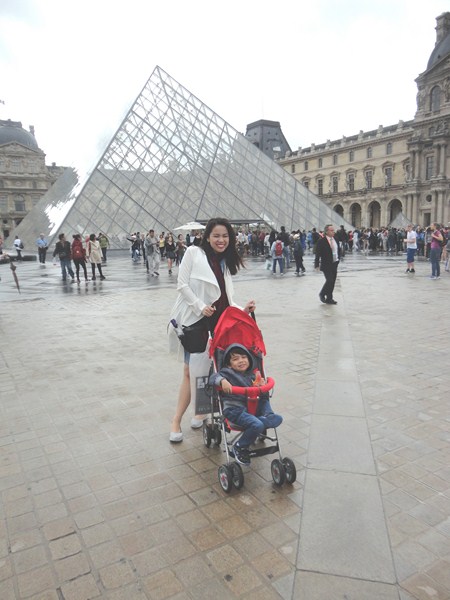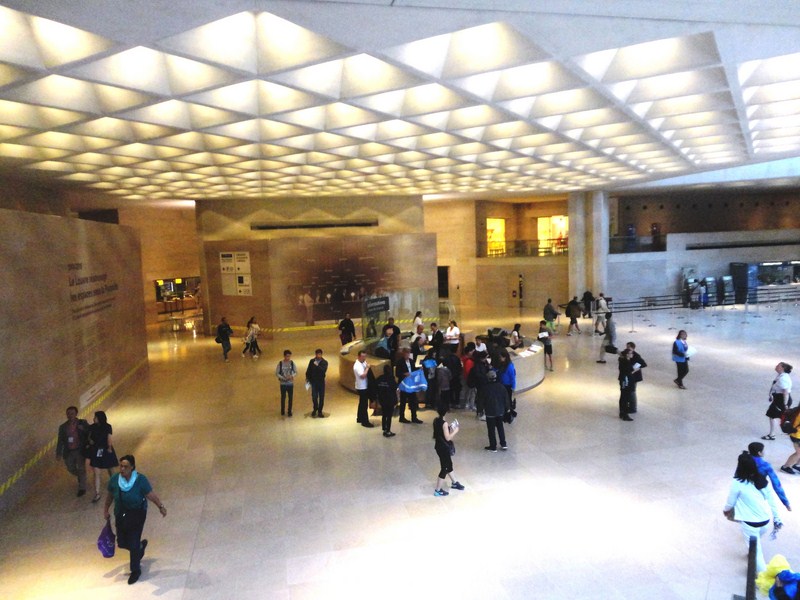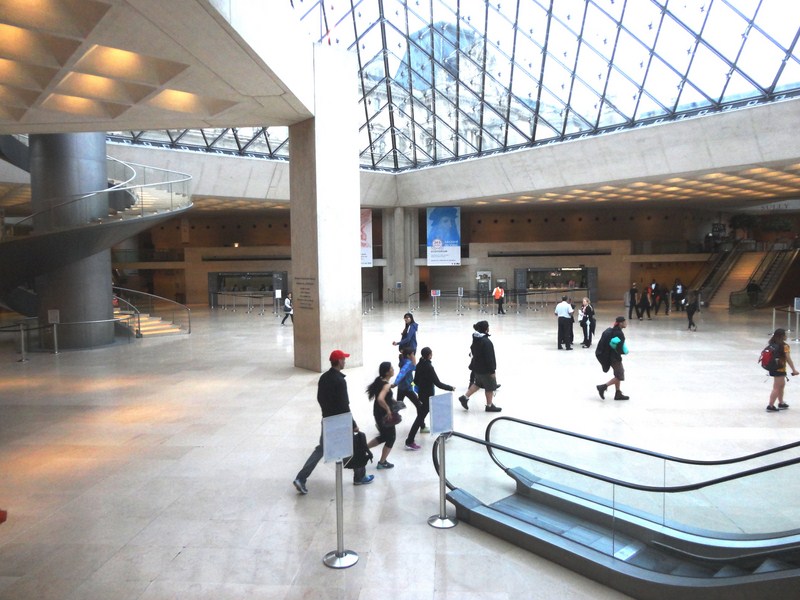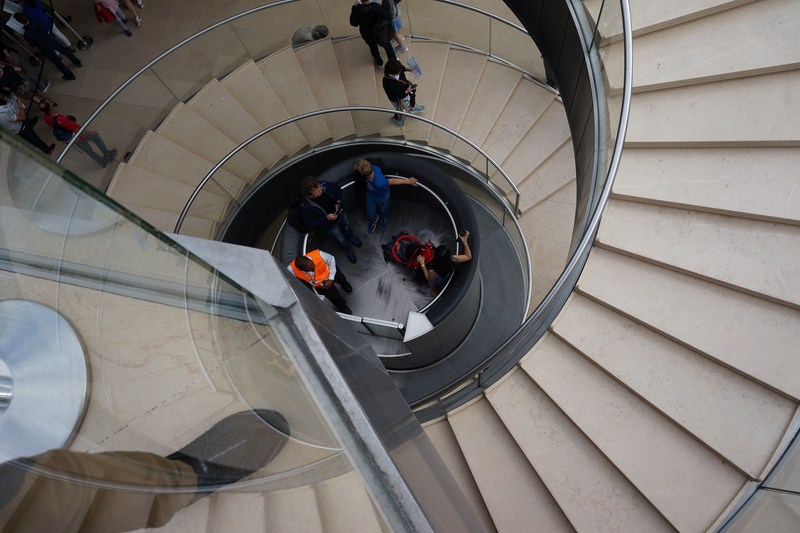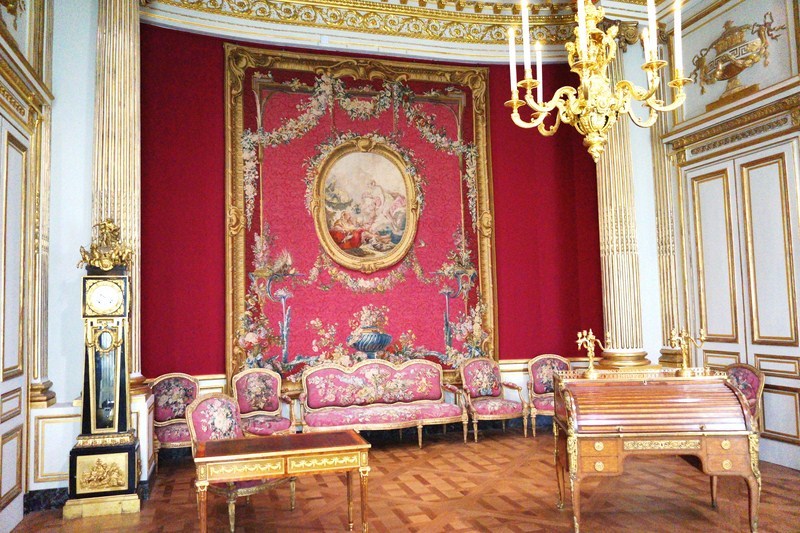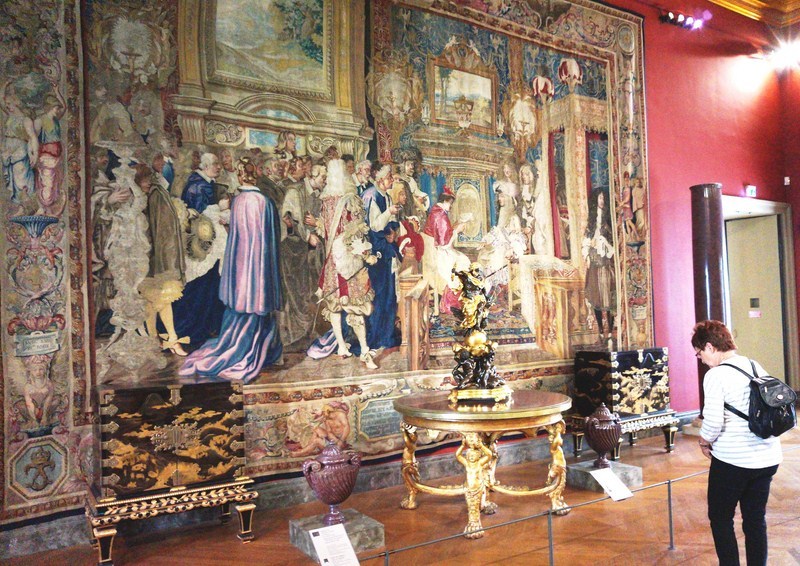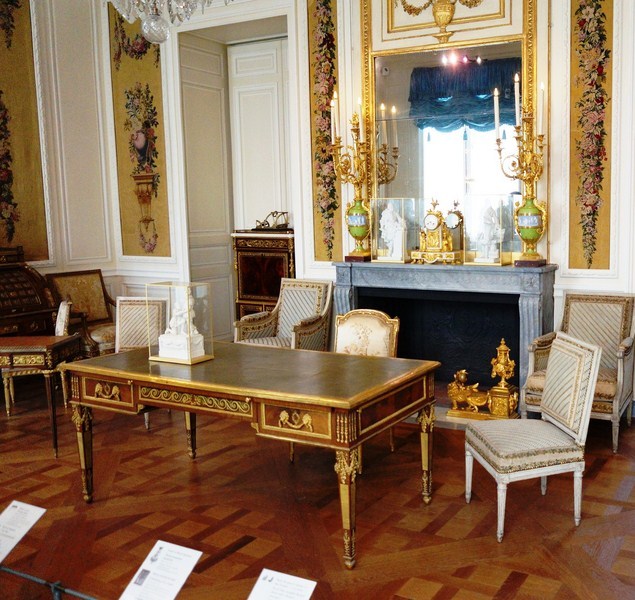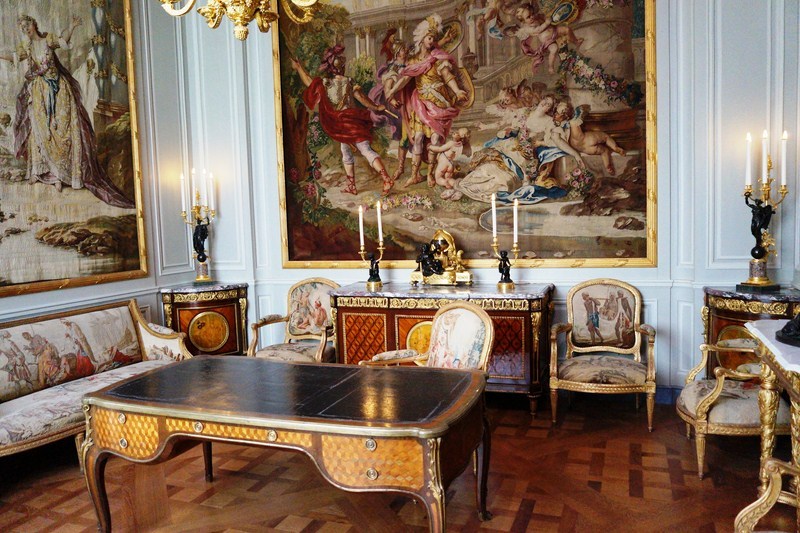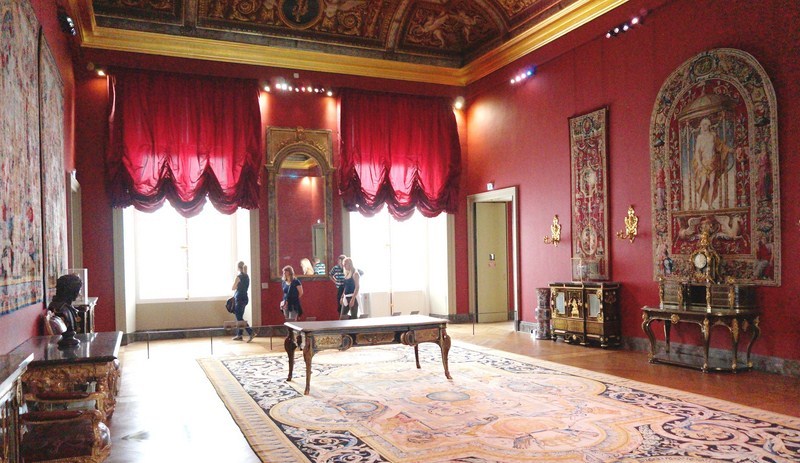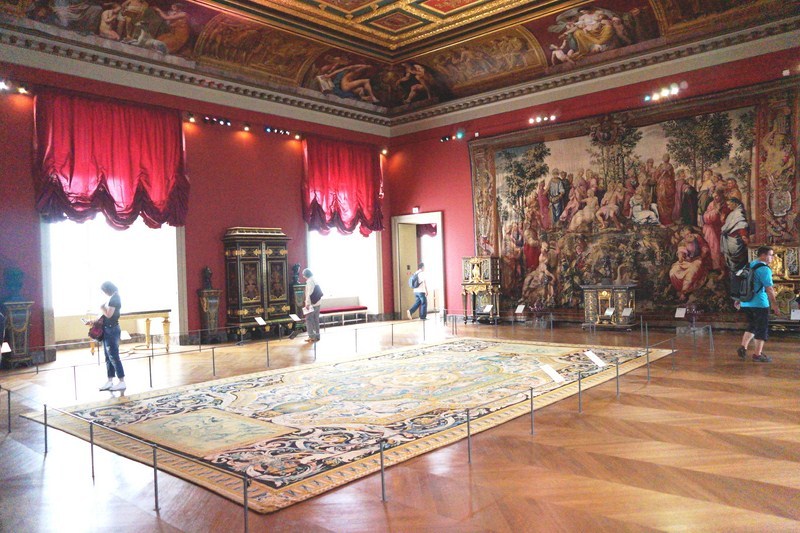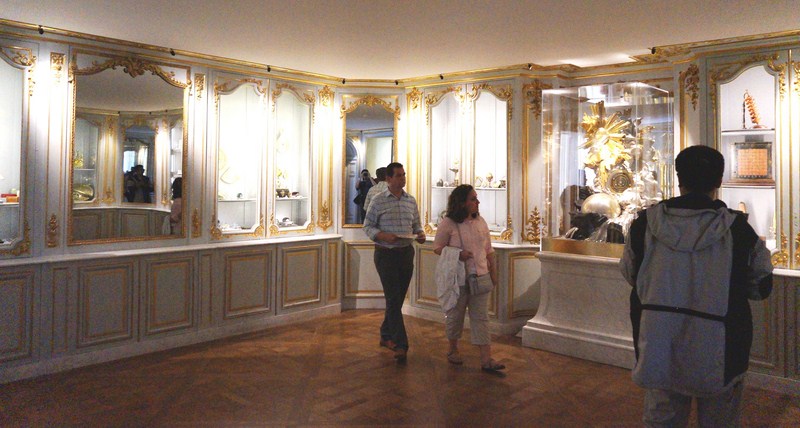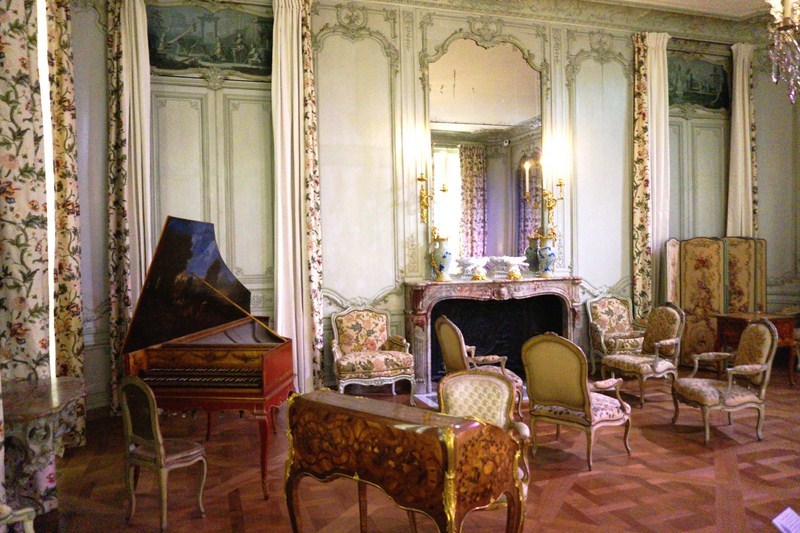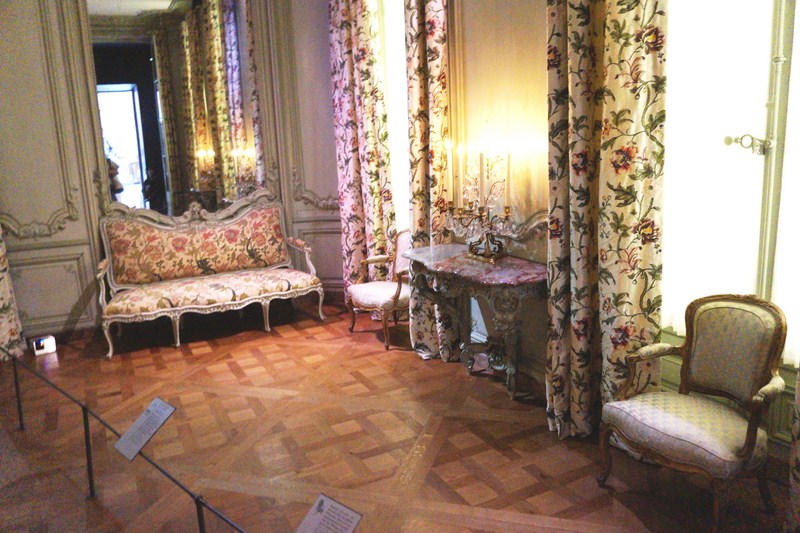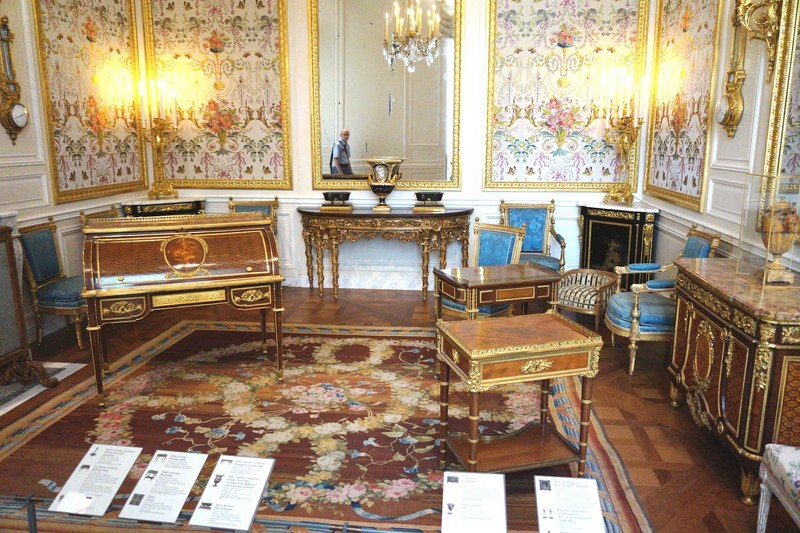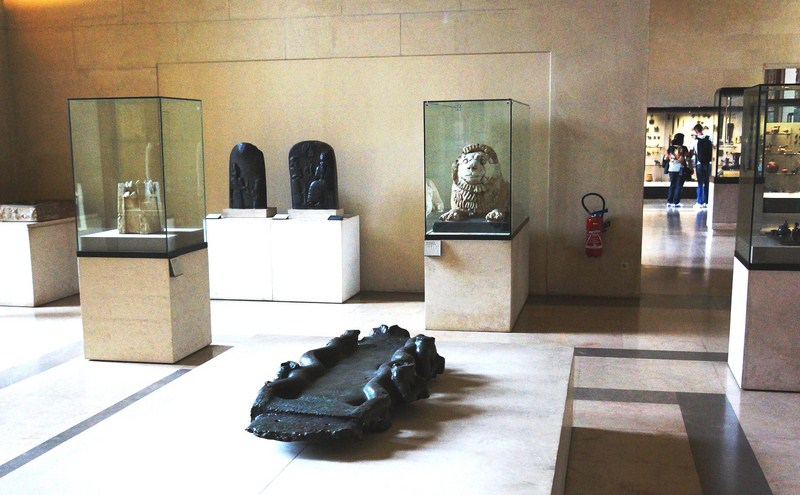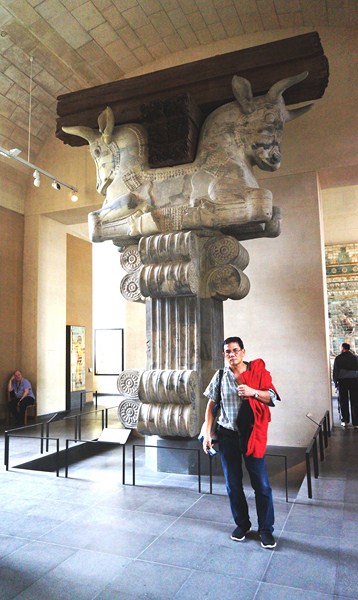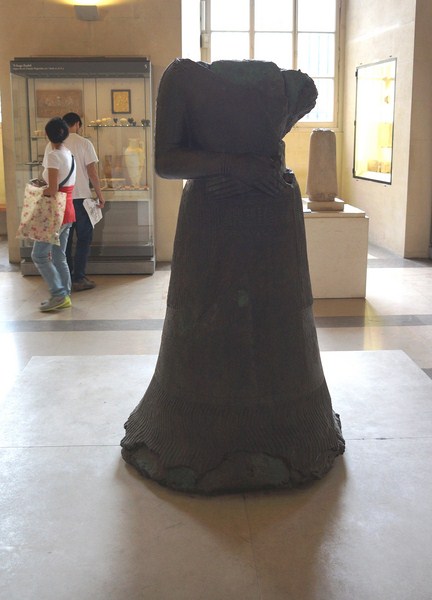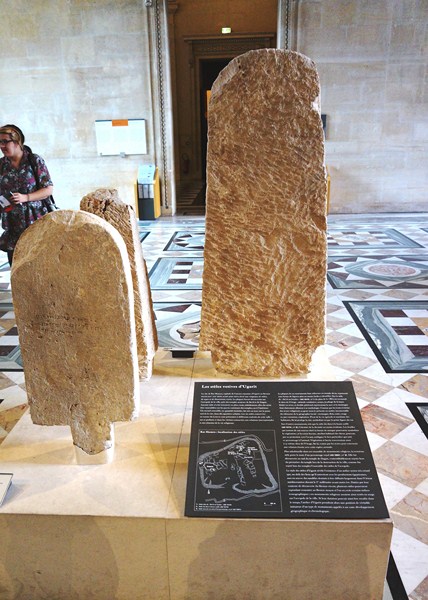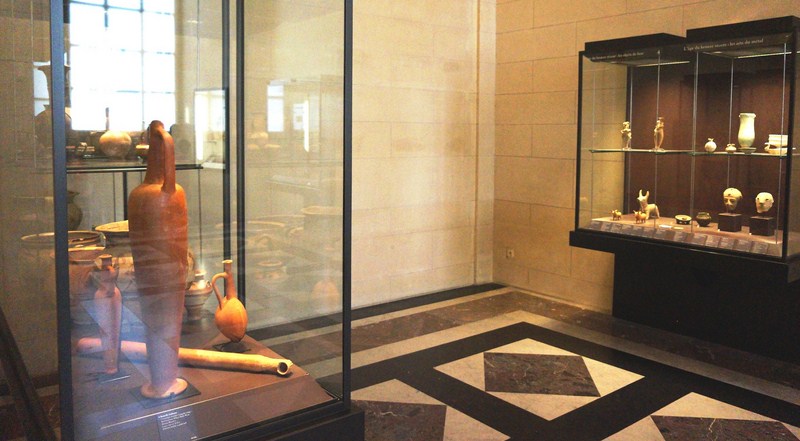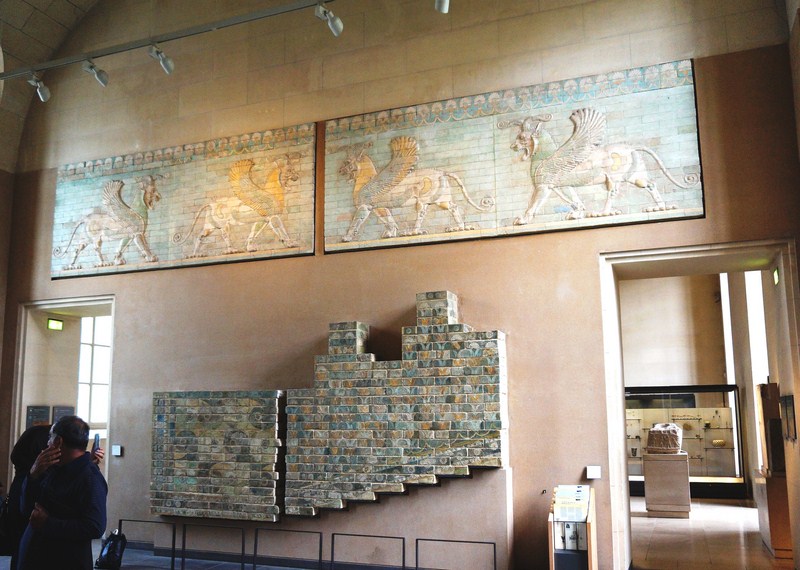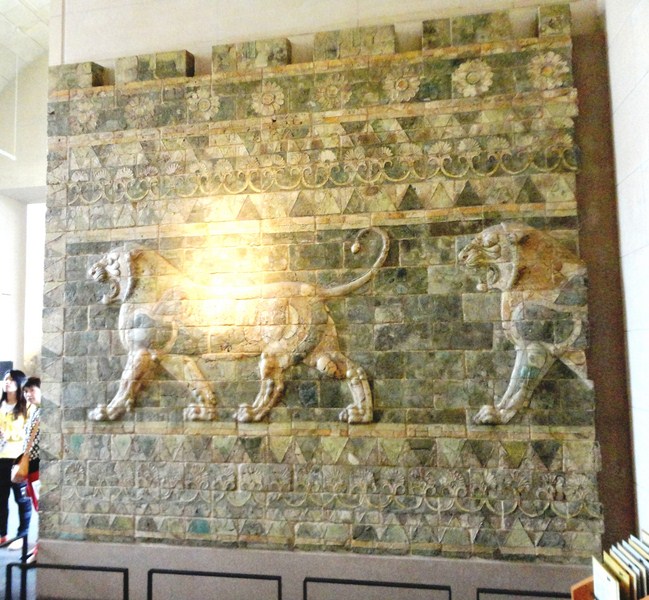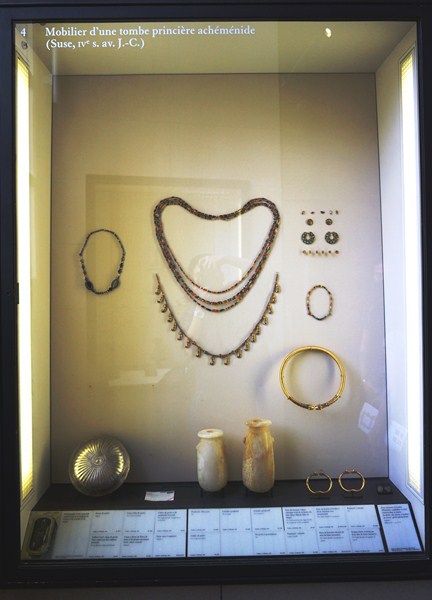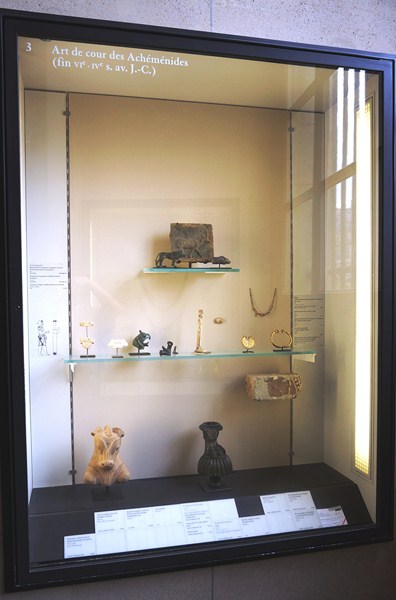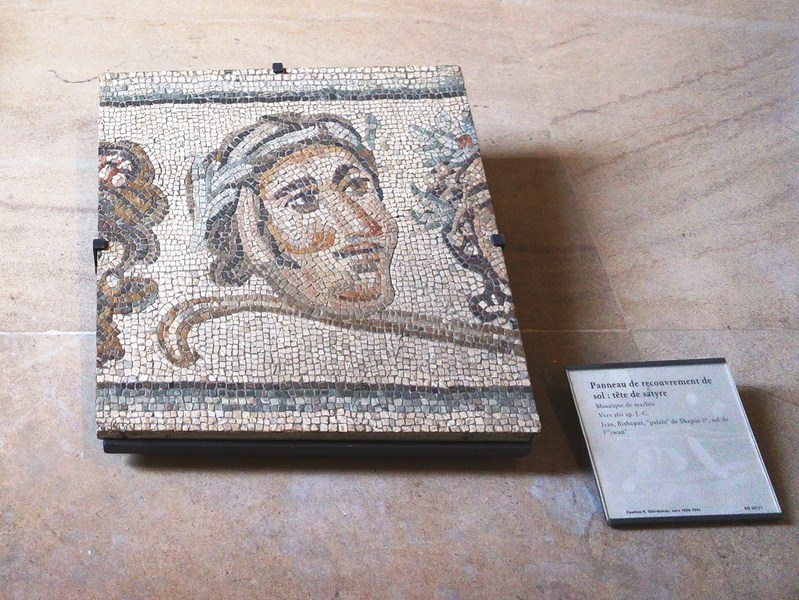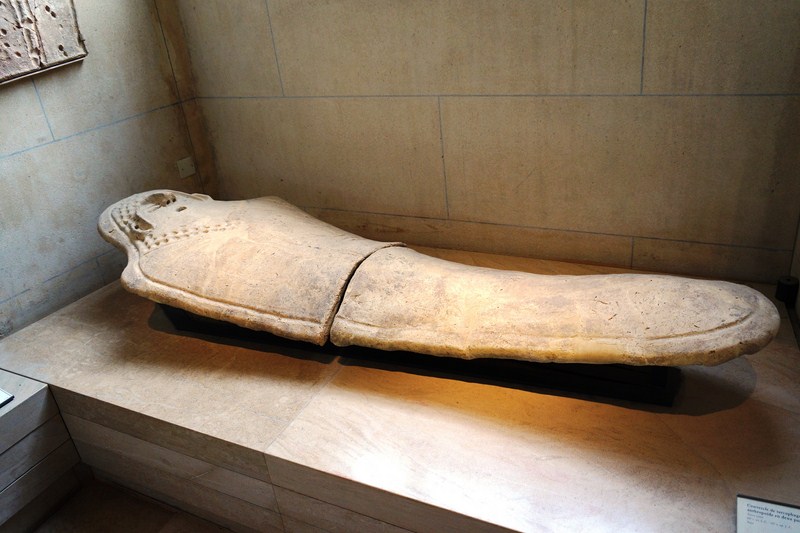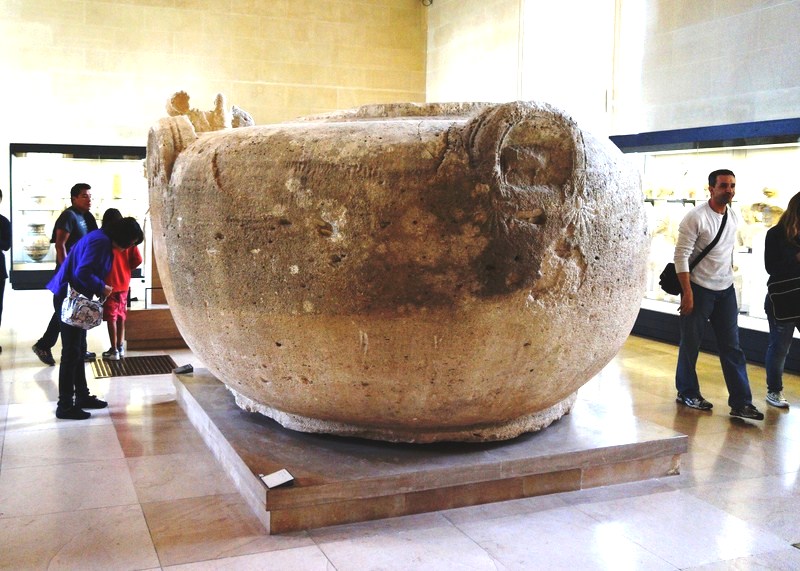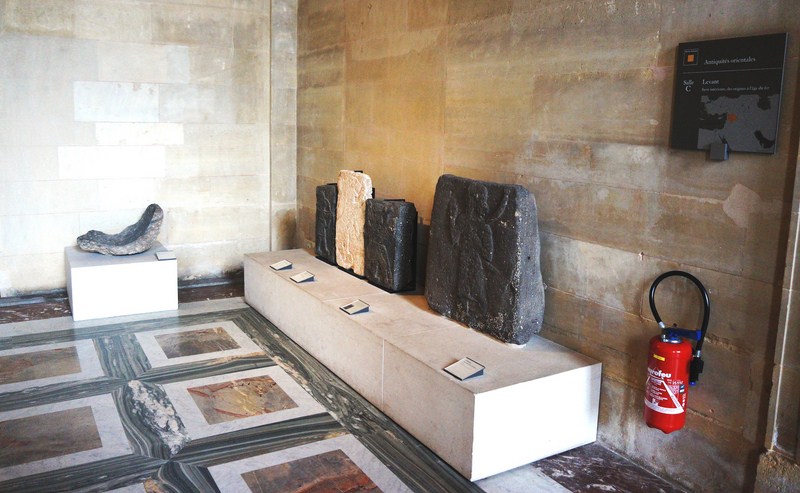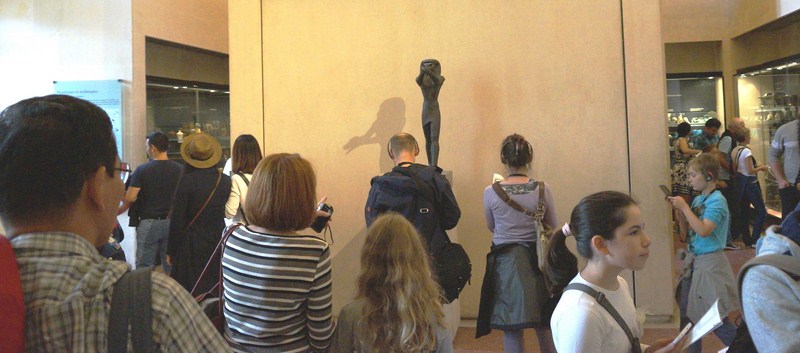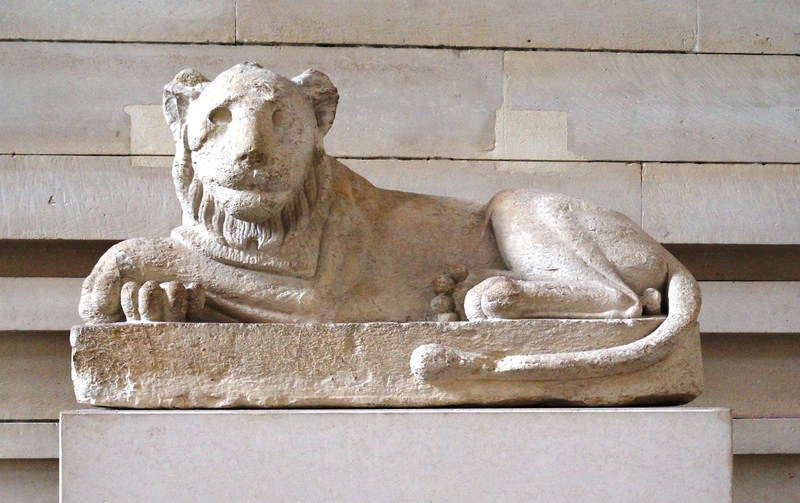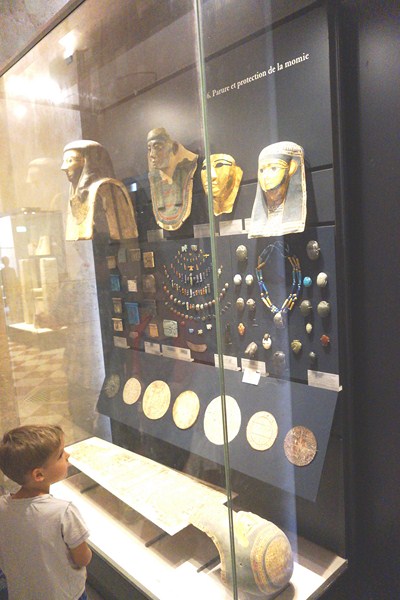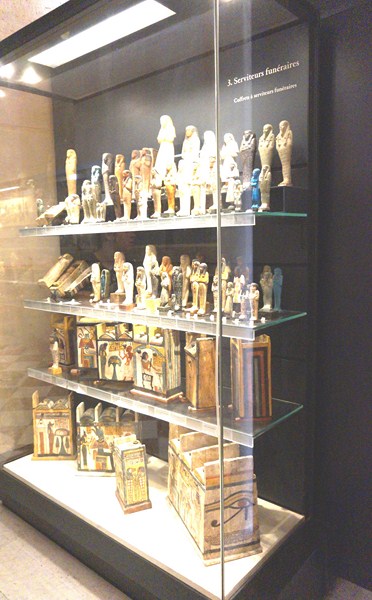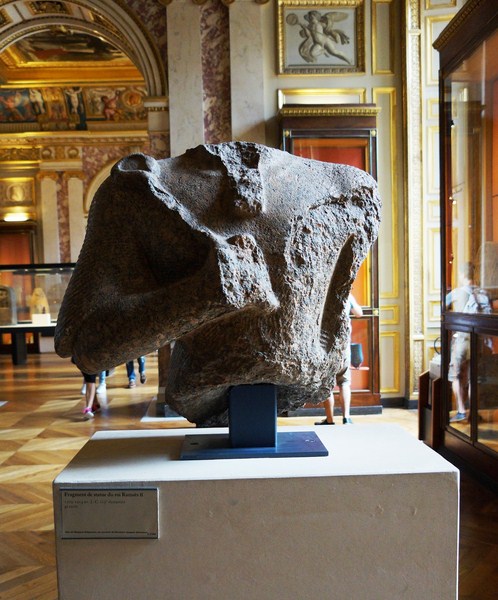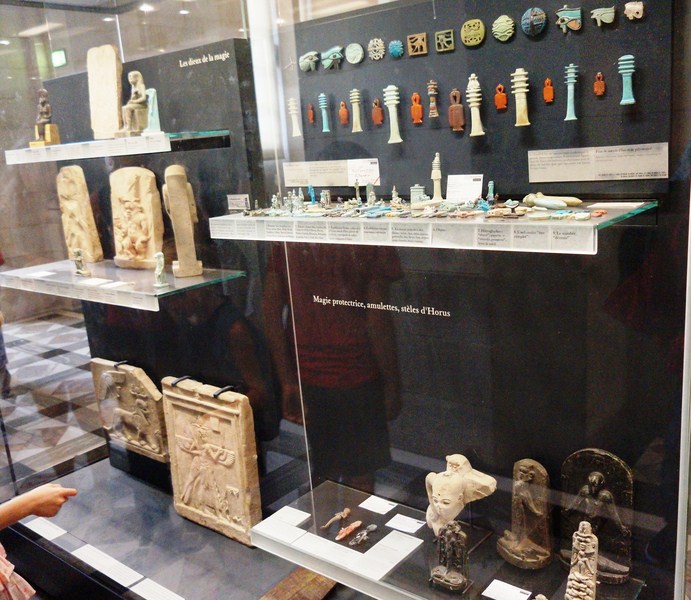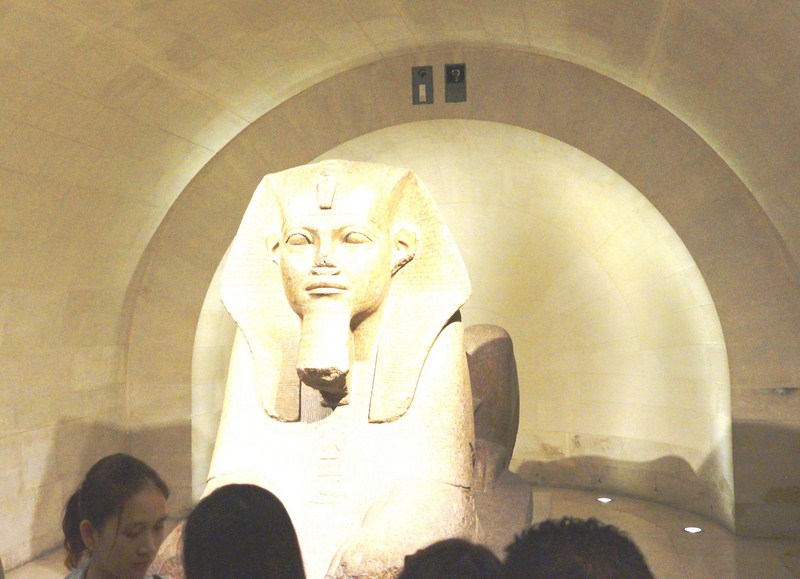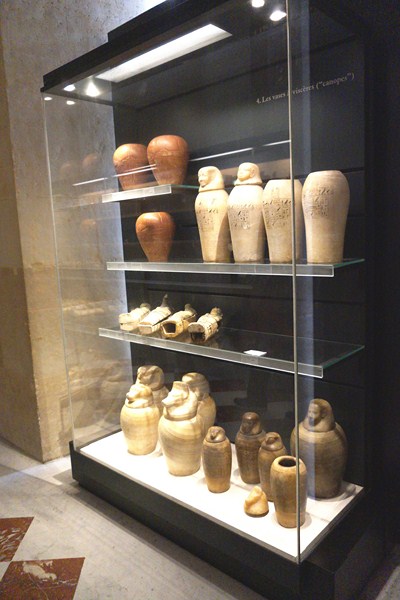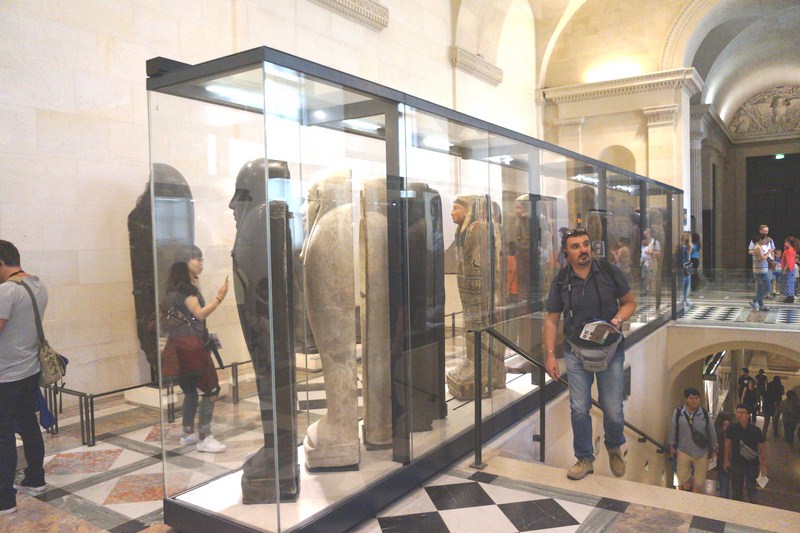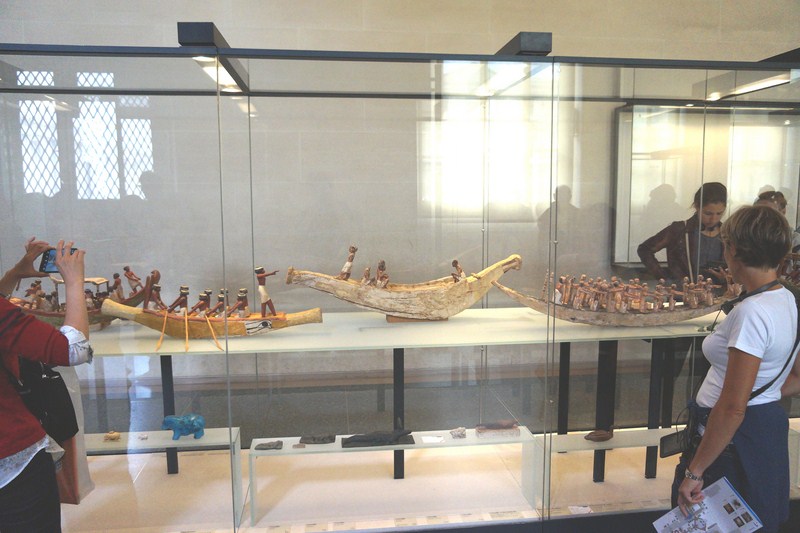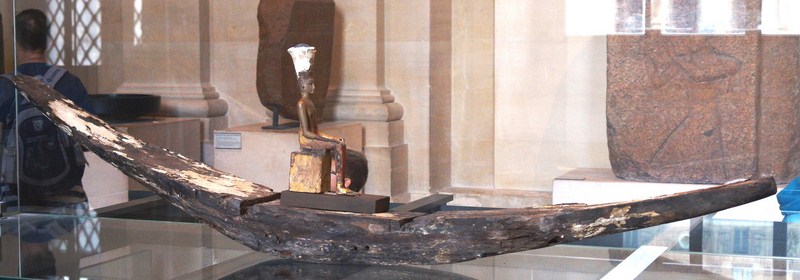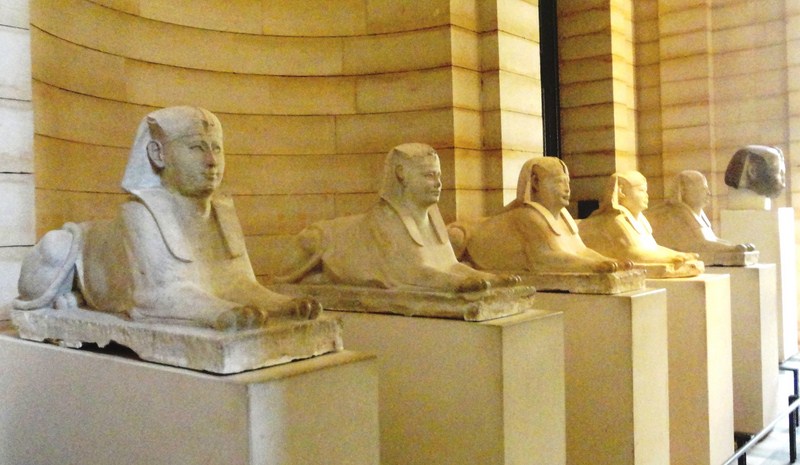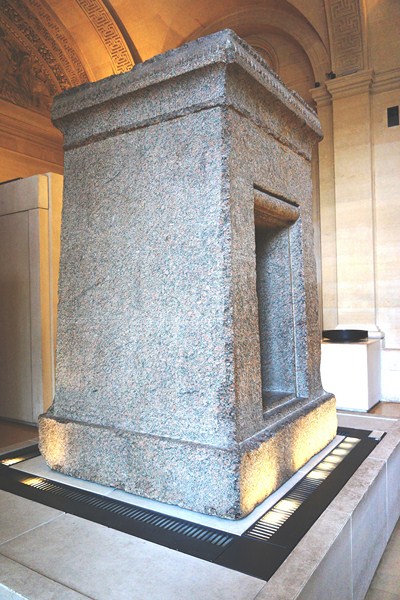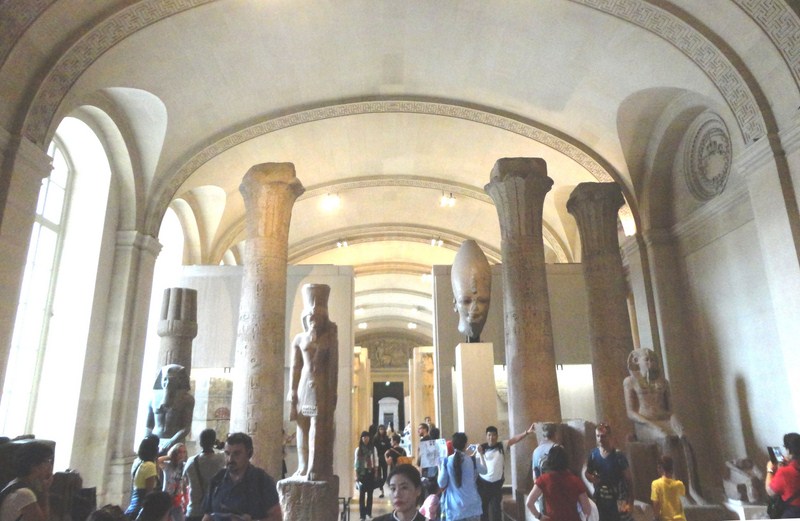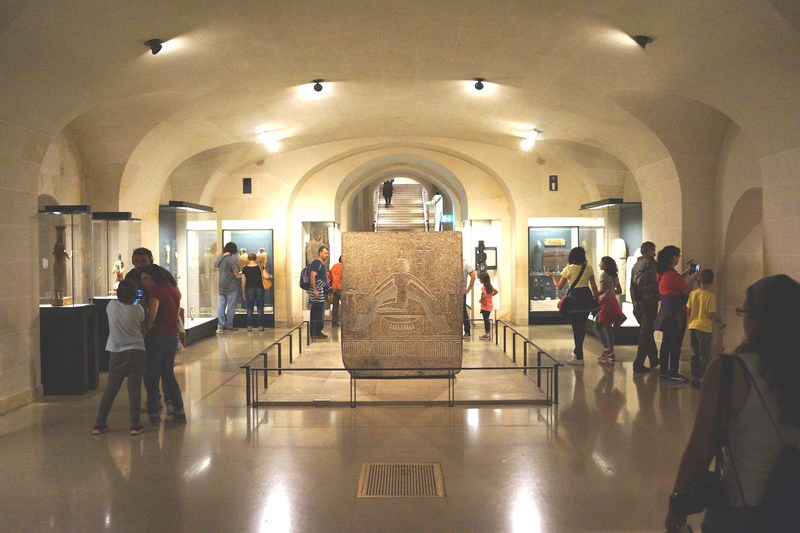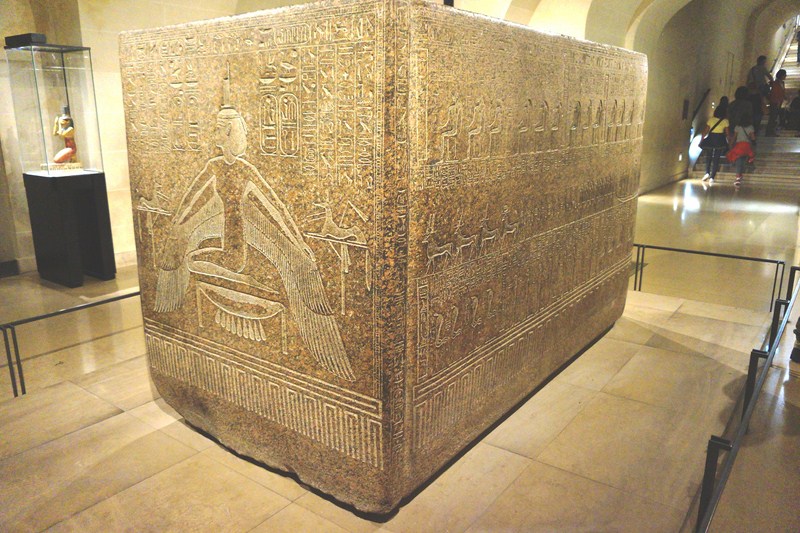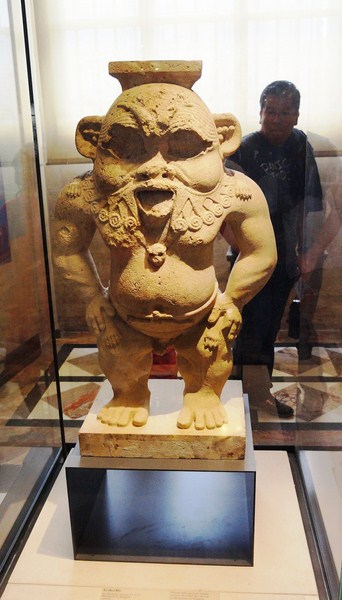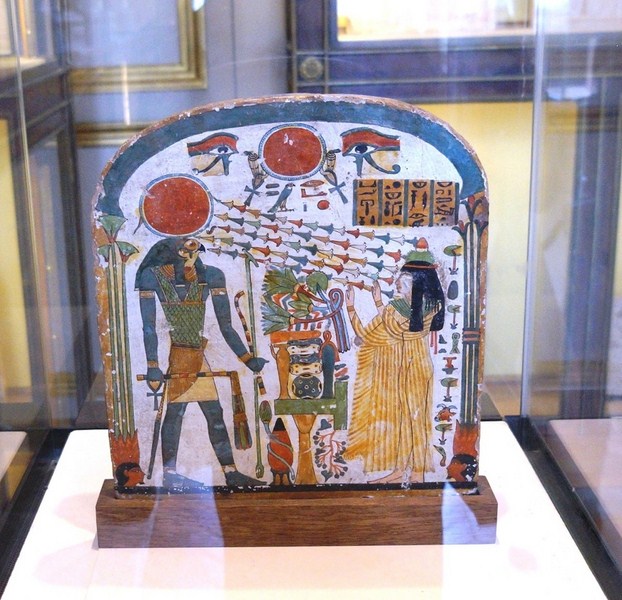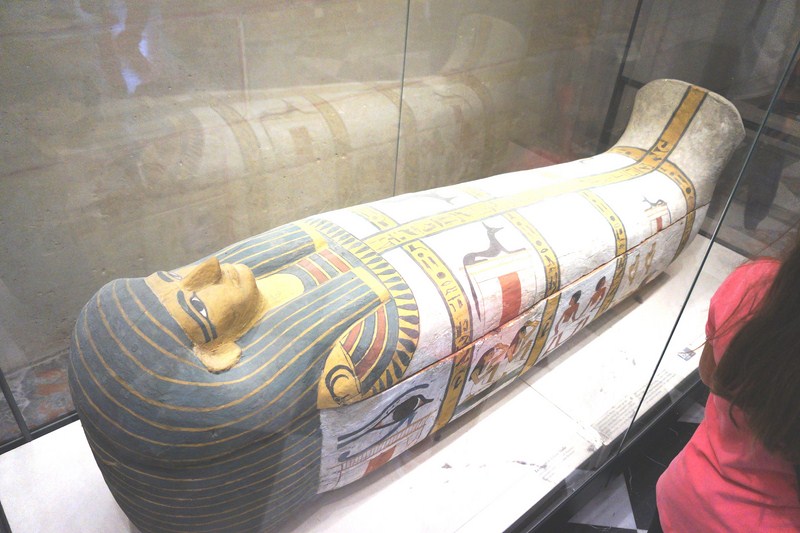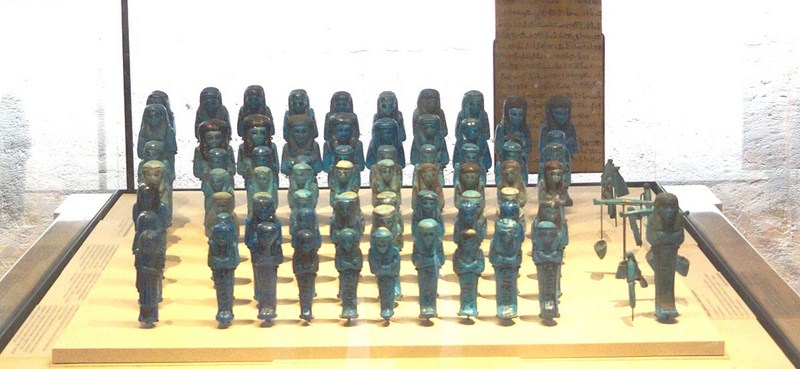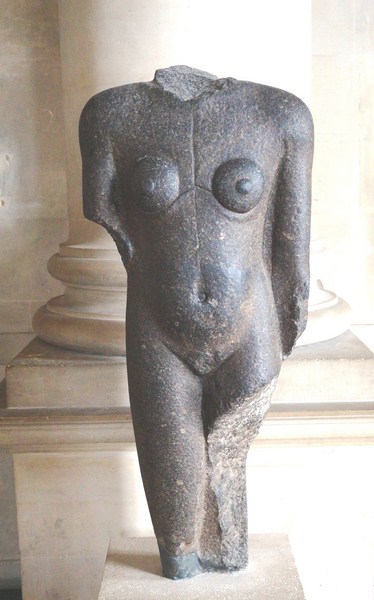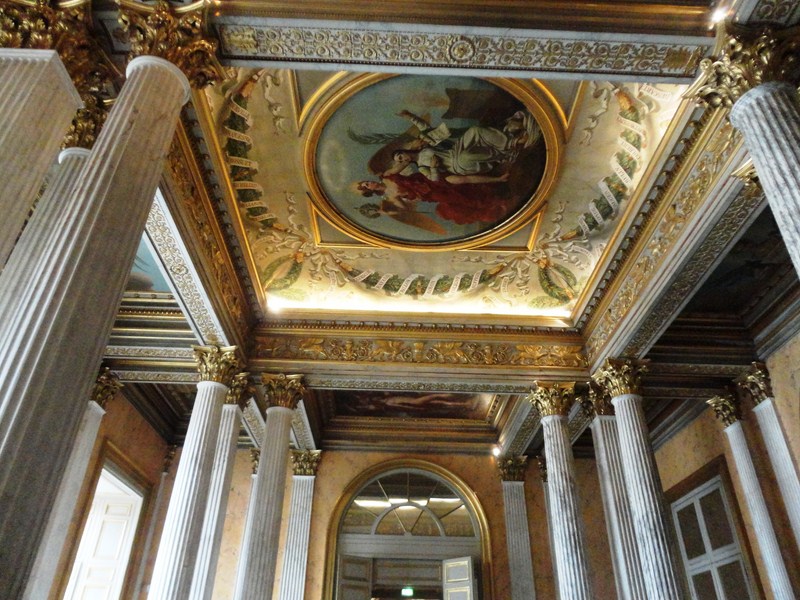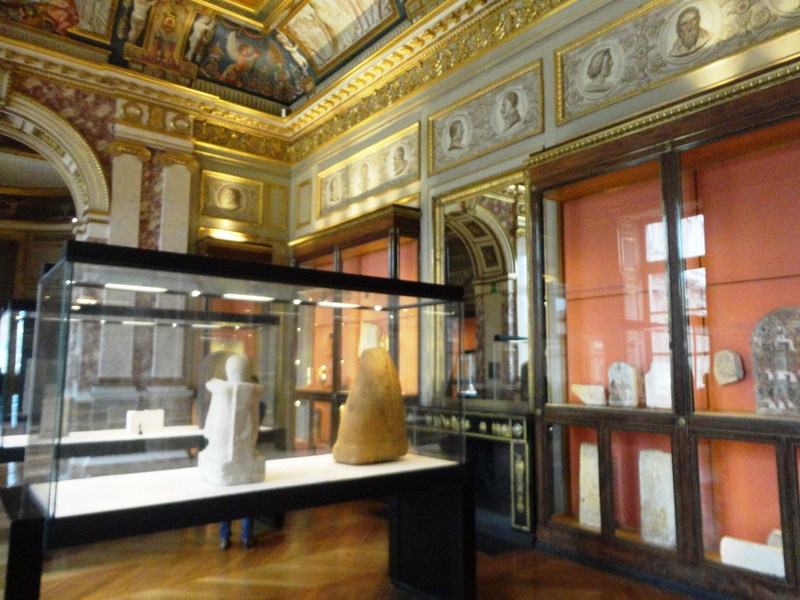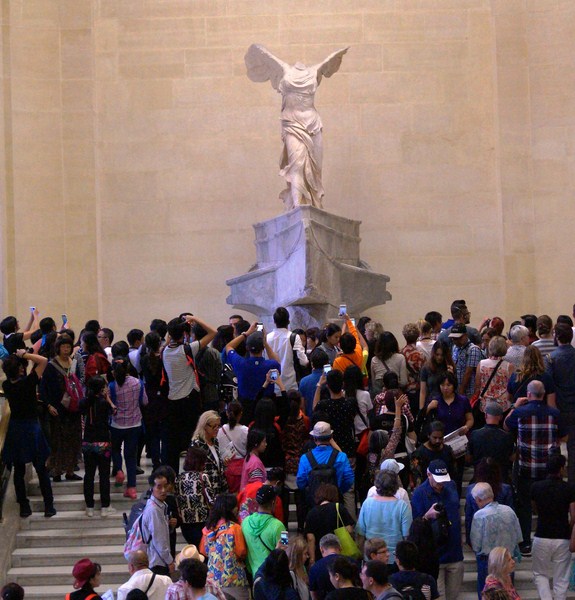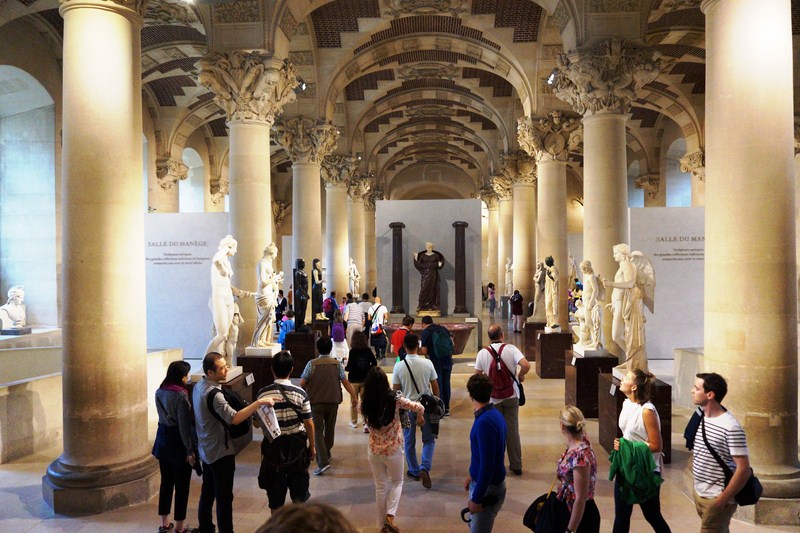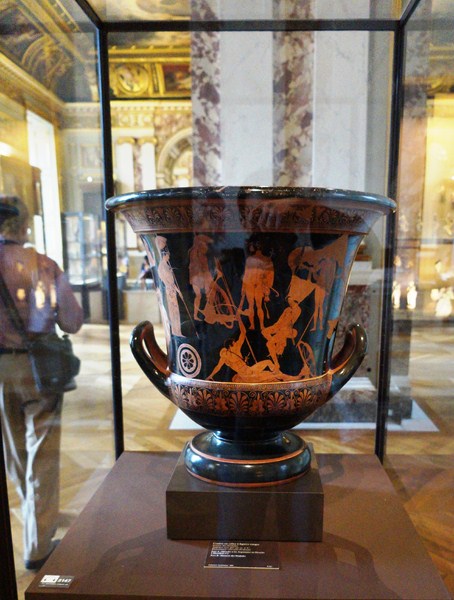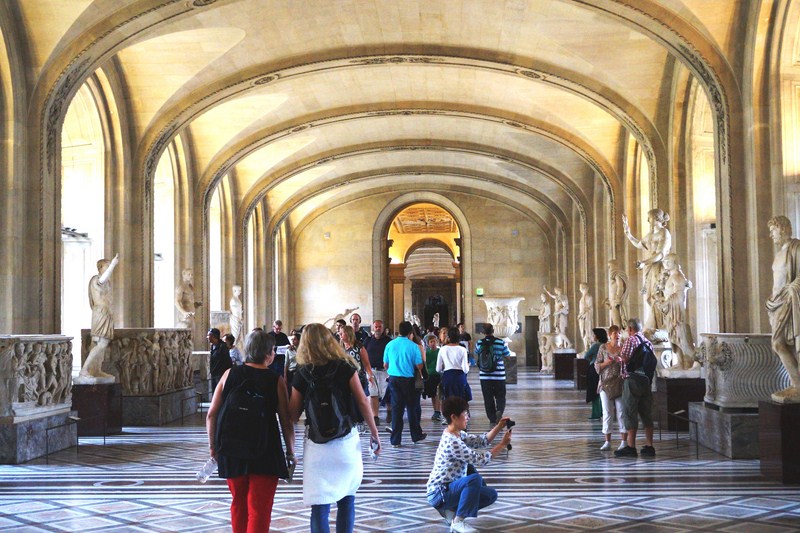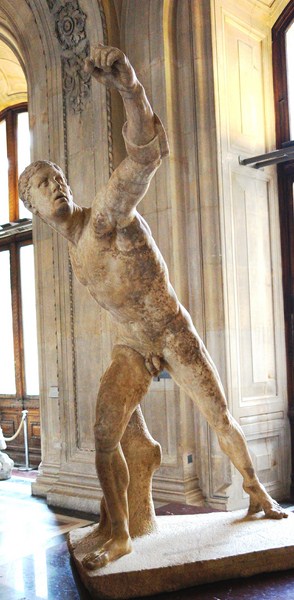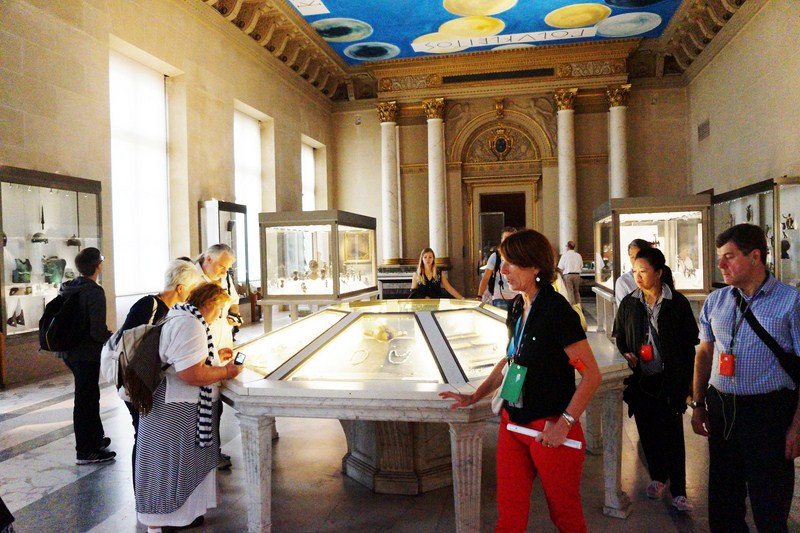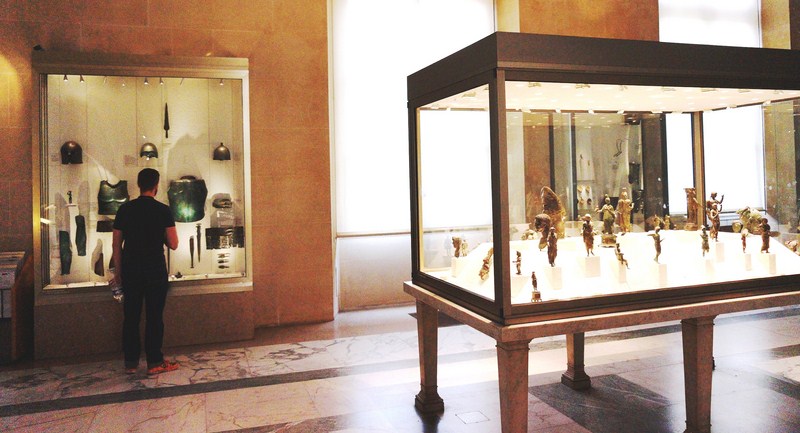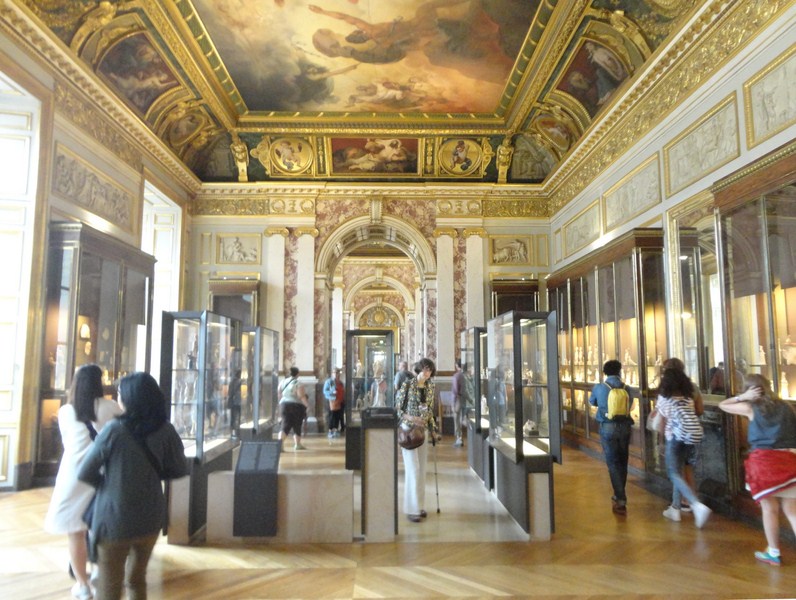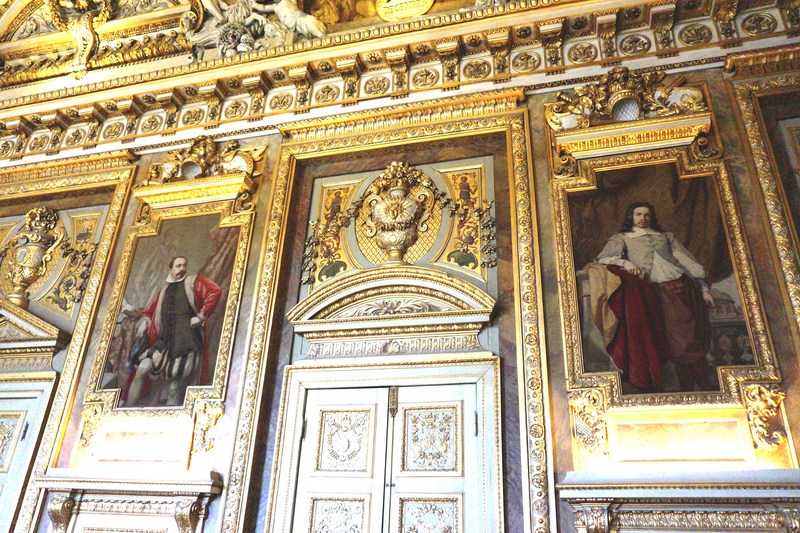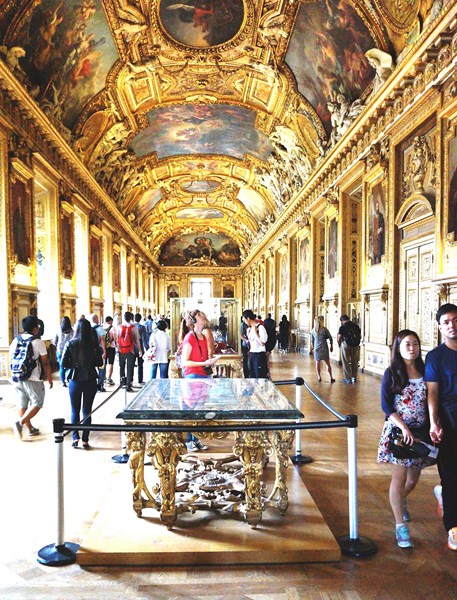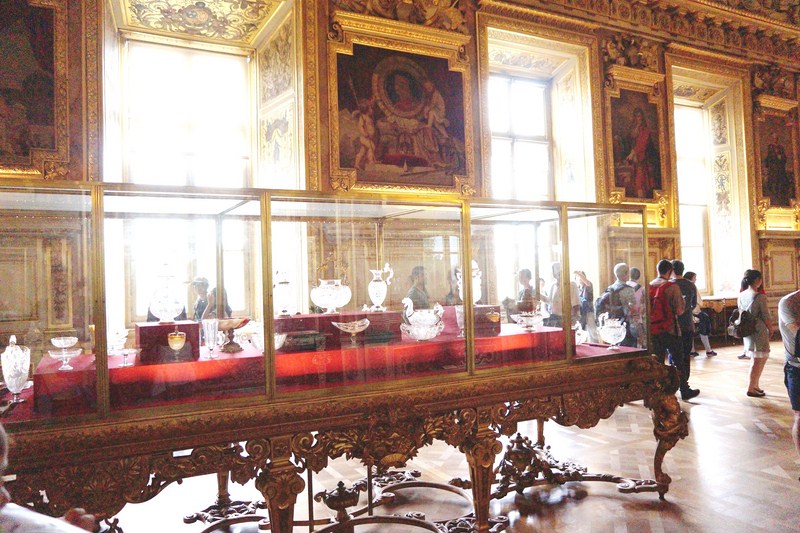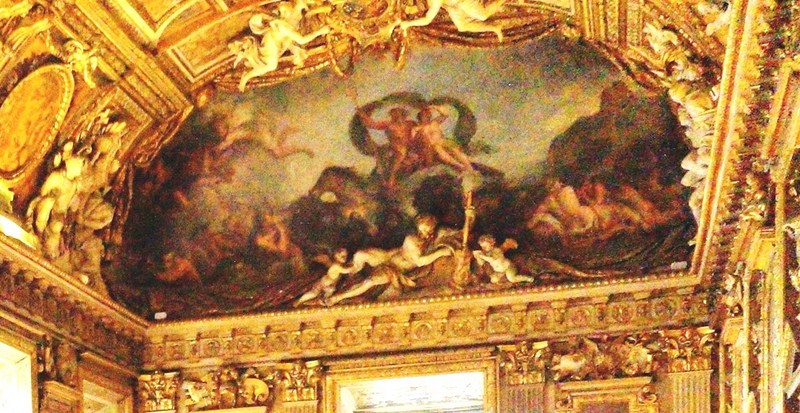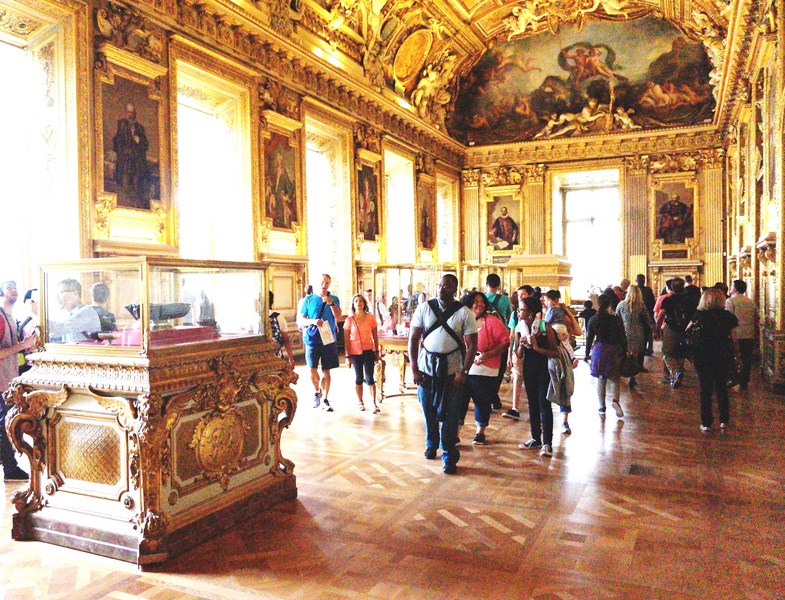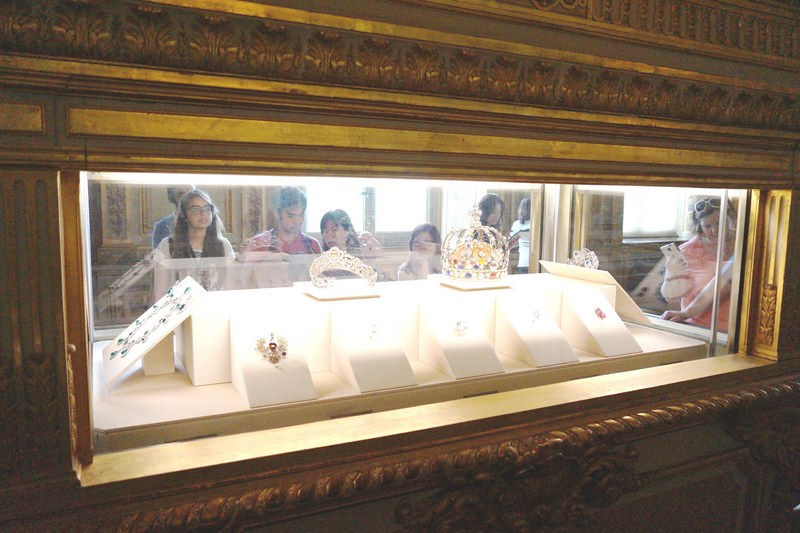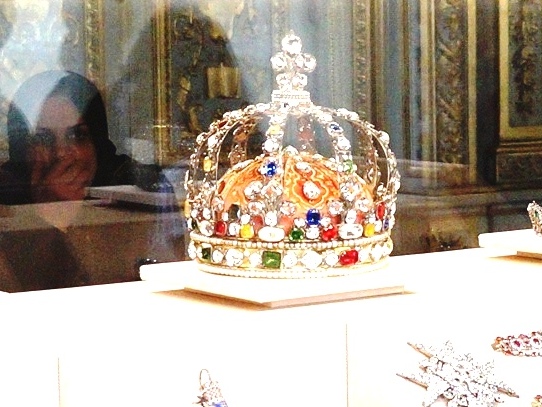The 7.6-hectare (18.8-acre) Place de la Concorde, situated along the right bank of the Seine River in the eighth arrondissement, separates the Tuileries Gardens from the beginning of the Boulevard Champs-Elysées. (see map). At the bottom of the Champs Elysées, set in the center, stands an ancient Egyptian obelisk from the Luxor Temple.
Here is the historical timeline of the Place de la Concorde and its sumptuous obelisk:
- In 1754, construction of the royal square began. First called Place Louis XV, it was designed by Ange-Jacques Gabriel, Louis XV’s architect, for the purpose of showcasing an equestrian statue of the King (commissioned in 1748 by the city of Paris, mostly sculpted by Edmé Bouchardon.and completed by Jean-Baptiste Pigalle after the death of Bouchardon)
- In 1763, the square was completed.
- During the French Revolution, the square was renamed as Place de la Révolution and the statue of the king was replaced by the guillotine.
- With the restoration of the Bourbons, the square was renamed Place Louis XVI and an equestrian statue of King Louis XVI, designed by Jean-Pierre Cortot, was installed.
- During the July Revolution in 1830, the equestrian statue of King Louis XVI was destroyed.
- In 1829, Muhammad Ali Pasha (also known as Mehmet Ali Pesha), the self-declared Khedive of Ottoman Egypt, deciding to dramatically reform the military, cultural and economic aspects of Egypt, offered to France the two obelisks of the first pylon at the front of Luxor Temple (the temple of the god Amon), that Ramesses II had raised in the 13th century BC.
- In August 1832 (they had to wait for the flood of the river to leave), the French steam paddle ship Sphinx sailed to Alexandria to rendezvous there with the Louqsor. The French seamen then lowered the obelisk with an array of blocks and tackles, yardarms and capstans.
- On April 1, 1833, the Sphinx and Louqsor depart Alexandria
- On May 10, 1833, both ships reached Toulon.
- On August 12, 1833, the ships arrived at Cherbourg port within the Basse Normandie region.
- On December 21, 1833, the Parisian obelisk arrived in Paris. Sphinx then towed Louqsor back to France.
- On October 25, 1836, the obelisk was moved to the center of Place de la Concorde and re-erected during a carefully planned ceremony watched and applauded by King Louis-Philippe I and his family, gathered on the balcony of the Hotel de la Marine, and an eager crowd of 200,000 people. The lifting of the obelisk began at 11:30 AM.
- In 1936, the Luxor Obelisk was officially classified as a Monument Historique.
- On the morning of December 1, 1993, to mark World AIDS Day, the anti-AIDS Charity Act Up Paris covered the Parisian obelisk with a giant pink condom.
- In May 1998, as part of the celebrations to mark Franco-Egyptian relations, a 3 m. high pyramid, made of bronze and gold leaf, was added to the top of the monolith by the government of France under then French President Jacques Chirac, to cap the top of the obelisk (its original pyramidion was believed stolen in the 6th century BC).
- In 1998 and 2000, French urban climber Alain Robert scaled the Parisian obelisk without the use of any ropes or other climbing equipment or safety devices.
The square marks an intersection of two axes. The Voie Triomphale (Triumphal Way), the major axis, extends east-to-west, in a perfectly straight line, from the former royal palace (now the Louvre Museum), past the Arc du Carrousel and through the Tuileries Gardens, up the Champs-Elysées to the Arc de Triomphe, and beyond — now culminating at the Grande Arche in the Paris suburb of La Défense. The second (minor) axis, formed by the line between Place de la Madeleine, down rue Royale through the square and across the Pont de la Concorde, culminates at the Palais Bourbon.
Check out “Arc de Triomphe” and “Arc de Triomphe du Carrousel“
Statues, at each corner of the octagon (at one time, the pedestals under these statues were inhabited by citizens of Paris), were initiated by architect Jacques-Ignace Hittorff. They represent the French cities of Brest and Rouen by Jean-Pierre Cortot, Lyon and Marseille by Pierre Petitot, Bordeaux and Nantes by Louis-Denis Caillouette, and Lille and Strasbourg by James Pradier.
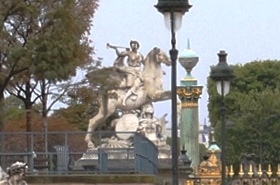
Horses of Marly. These are copies of Costeau’s horses, masterpieces of French sculpture, that were moved to the Louvre in 1984 to be conserved.
The Horses of Marly (Chevaux de Marly), monumental statues of French sculptor Guillaume Coustou the Elder located at the beginning of the Champs Elysées, are copies of the originals which are now exhibited at the Louvre Museum.
The Pont de la Concorde, at the south end of the square, was built between 1787-1790 by Jean-Rodolphe Perronnet and widened between 1930-1932. It crosses the Seine, leading to the Palais Bourbon, home of the French National Assembly (Assemblée Nationale).
Bordering the Place de la Concorde are the Galerie Nationale du Jeu de Paume (originally Napoleon III’s indoor tennis court) and Musée de l’Orangerie, both in the Tuileries Gardens; and the Embassy of the United States, located in the corner of the square at the intersection of Avenue Gabriel and Rue Boissy d’Anglas.
Here are some interesting trivia regarding the Place de la Concorde.
- Measuring 359 m. (1,178 ft.) long by 212 m. (696 ft.) wide, Place de la Concorde is the largest public and, possibly, the most infamous square in Paris and is one of the most well known traffic circles in the world.
- The square is actually in the shape of an octagon (because of its cut-off corners) and was once bordered by large moats which no longer exist (filled in during the reign of Napoleon III) .
- Between 1793 and 1795, during the French Revolution, Louis XVI (January 21, 1793), Princess Élisabeth of France, Marie Antoinette, Charlotte Corday, Georges Danton, Camille Desmoulins, Antoine Lavoisier, Madame du Barry, Maximilien Robespierre Louis de Saint-Just, and Olympe de Gouges and nearly 1,300 others were executed there. It is said that the scent of blood was so strong in the square that a herd of cattle once refused to cross the grounds.
- Following the Revolution, the square underwent a series of name changes – Place de la Concorde (as a gesture of reconciliation after the turmoil of the revolution), Place Louis XV (again), Place Louis XVI, Place de la Chartre and, once again, Place de la Concorde.
- Its obelisk, and twin that still stands in front temple in Luxor (formerly the city of Thebes, the second largest city in Egypt at the time), were the largest obelisks to have been erected by Ramses II (others were set up at temples in Heliopolis and Tanis).
- Obelisks were popular among the Roman emperors so much so that 13 of them were taken to Rome. Today, in addition to that in Paris and the Cleopatra’s Needles in London and New York, historic Egyptian examples are also found in Florence in Italy.
- Mediating between the Egypt and France was Jean-Francois Champollion, first decipherer of Egyptian hieroglyphs and curator of Egyptian collections at the Louvre Museum. Dying in 1832, he never had the chance to see the completion of his work.
- Through the efforts of Jean Baptiste Apollinaire Lebas, the two ancient obelisks were presented as a gift to King Charles X. However, King Charles X had already abdicated from the throne, even before the first of the two obelisks was even destined to arrive in Paris, and King Louis Philippe took over.
- Only the right-hand obelisk in Luxor Temple was transported and erected. The left-hand obelisk remained in its location in Egypt as President Francois Mitterand, on September 26, 1981, renounced the French claim to second Luxor obelisk as a symbolic gesture and one of peace between nations.
- The original sculpted Egyptian pedestal (both obelisks had identical pedestals), which included the statues of 16 fully sexed carved baboons raising their legs, revealing their sexes (at dawn, ancient Egyptians observed baboons in nature making such a gesture and interpreted this as the animals ‘adoring’ the sun), was deemed too obscene for public exhibition. It is now displayed in the Egyptian section of the Musée du Louvre. A block of granite for the new pedestal was ordered in Brest.
- To transport the monolith, the 49 m. long, specially designed, purpose-built, flat bottomed and 3-masted barge Louqsor (the first naval steamer), a seagoing freighter, was built by the Toulon naval yard to be able to navigate the Atlantic and the Mediterranean, sail up the Seine and the Nile, and pass under the bridges of Paris.
- In Luxor, 300 workmen dug a canal to allow the Louqsor to come close to the obelisk. After packing and felling the monolith, it had to be dragged for 400 m. to join the Nile.
- To lift the obelisk at the Place de Concorde, a counterweight system was developed by engineer Apollinaire Lebas, with 350 gunners operating the lift, with the strength of their arms, while the engineer remains voluntarily under the obelisk.
- The successful French transport operation of the obelisk (a 9,000-km. journey that lasted seven long years), not an easy engineering feat as the effort, manpower and expertise was tremendous. It predates, by more than 30 years, the eventful transport of Cleopatra’s Needle by the British.
- The large mechanical clock, offered in 1845 by King Louis Philippe in exchange for the obelisk, was discovered to be faulty, having probably been damaged during transport. The still not working clock exists in a clock-tower in a mosque at the top of the Cairo Citadel.
- Compared to the rest of this old monument, the new and shiny pyramidion makes it now known as the most cheerful obelisk in the world for what it represents.
- In the Star Trek novels, the Place de la Concorde is the location of the offices of the President and the Council of the United Federation of Planets.
The 3,000 year-old, so-called Luxor Obelisk (French: Obélisque de Louxor), of yellow granite and inscribed with hieroglyphs in honor of the Pharaoh Ramesses II, is one of a pair of ancient Egyptian obelisks carved to stand either side of the portal of the Luxor Temple.
Flanked on both sides by fountains (Fontaine des Mers and Fontaine des Fleuves) constructed at the time of its erection, the Paris obelisk rises 22.83 m. (74.9 ft,) high, including the base, and weighs over 250 metric tons (280 short tons). Its hieroglyphics depict the rule of Ramses II and Ramses III.
Its present-day pedestal , originally intended for the equestrian statue of King Louis XVI, is now with drawn gilded diagrams explaining the procedures and the complex machinery and different devices that were used for the transportation and erection on the square (just as the pedestal of the Obelisk of Theodosius has relief carvings showing that ancient Egyptian obelisk’s re-erection in Constantinople).
Check out “Louvre Museum” and “Louvre Museum – Egyptian Antiquities Department”
Hôtel Crillon, north of the obelisk, was where Marie Antoinette, in happier times, took piano lessons and where, in 1778, France signed a treaty (first in the world) recognizing a free and independent United States of America.
Place de la Concorde: 75008 Paris, France.
How to Get There:
- Concorde, the nearest Métro station, is located beneath the Place de la Concorde, at the beginning of the Rue de Rivoli, next to the Jardin des Tuileries. It serves Lines 1, 8 and 12. Walking in a northerly direction gets you to the Madeleine stop that serves lines 8, 12 and 14 while walking in a westerly direction, up the famous Avenue des Champs Elysees, you have the Champs-Elysees – Clemenceau stop serving Lines 1 and 13.
- Several Bus Lines that gets you close by to this historical monument including 24, 42, 72, 73, 84, 94 along with the Noctilien Night Bus Service via lines N11 and N24. However, the nearest RER train station is the Invalides stop on the left bank of the River Seine, which serves the RER C Line.24, 42, 52, 72, 73, 84, 94.

